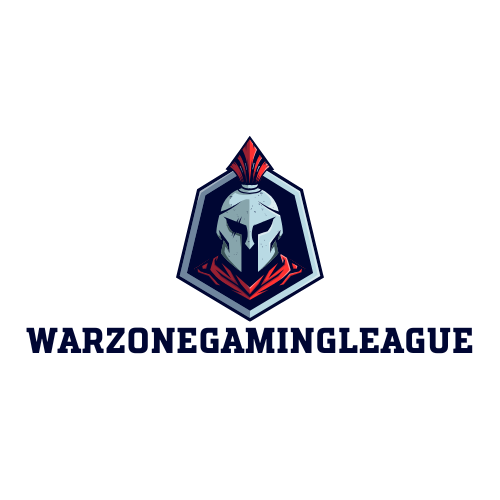The Best Fluffy Pancakes recipe you will fall in love with. Full of tips and tricks to help you make the best pancakes.

Gaming Rankings: Unlocking the Secrets of Competitive Success and Player Engagement
In the ever-evolving world of gaming, rankings are the holy grail for players and developers alike. Whether it’s a fierce showdown in a battle royale or a cozy puzzle game, everyone wants to know who’s on top. But let’s face it—navigating through the maze of rankings can feel like trying to find a hidden treasure in a pixelated jungle.
Gaming Rankings
Gaming rankings play a critical role in how players and developers perceive performance and success within the gaming community. They provide a structured way to evaluate skills and accomplishments.
What Are Gaming Rankings?
Gaming rankings categorize players based on performance metrics. They derive from various factors such as win-loss records, skill ratings, and player statistics. Organizations and platforms use these rankings to create leaderboards, showcasing the top players in competitive environments. Different games implement unique ranking systems, which can include tiered divisions or skill-based matchmaking.
Importance of Gaming Rankings
Gaming rankings significantly influence player engagement. They motivate individuals to improve their skills and strive for higher positions on the leaderboard. Developers benefit from rankings too, as they help balance competitive play and encourage community involvement. A solid ranking system attracts players, fosters competition, and enhances the overall gaming experience.
Factors Influencing Gaming Rankings
Various elements shape gaming rankings, ensuring they reflect the skill and performance of players accurately. Key factors include game performance metrics and player feedback and ratings.
Game Performance Metrics
Game performance metrics play a vital role in determining rankings. Metrics such as win-loss records and kill-death ratios provide insight into a player’s effectiveness. Stat tracking tools gather data on player achievements, helping to establish baselines for competition. Competitive games often use algorithms to calculate skill ratings, integrating various performance indicators to create a holistic view. Utilizing this data not only facilitates fair matchmaking but also identifies top performers within gaming communities.
Player Feedback and Ratings
Player feedback and ratings significantly influence rankings as well. Honesty from the gaming community ensures that ratings reflect actual experiences. Players rate various aspects, including game balance, mechanics, and user experience. Consistent feedback affects developers’ decisions, optimizing game design for better performance. When the community actively engages in providing ratings, it results in dynamic rankings that evolve with player expectations and performance standards.
Popular Gaming Ranking Systems
Various gaming ranking systems play a critical role in evaluating player performance and fostering competition in the gaming community. Each system caters to different styles and preferences, ensuring a comprehensive overview of player skills.
Industry Standards
Rankings often adhere to established industry standards. These standards include metrics like skill ratings, match performance, and win-loss ratios. Popular platforms such as Elo and Glicko employ complex algorithms to rank players based on their performance against opponents. Many competitive games, including chess and first-person shooters, utilize these systems to accurately measure player abilities. Rankings derived from these systems help maintain fairness in matchmaking and create balanced competitive environments. Players benefit from understanding their standings and identifying areas for improvement as they strive for advancement.
Community-Based Rankings
Community-based rankings rely heavily on player feedback and engagement. They often incorporate user-generated data to reflect actual gameplay experiences. Platforms like Steam and Reddit feature community leaderboards that rank players based on peer reviews and participation. These rankings capture a dynamic view of player abilities and preferences, facilitating community interactions. Players contribute to these rankings by sharing stats and engaging in discussions about skill levels. Community-based systems elevate the competitive landscape by allowing players to identify top performers and emerging talents based on collective insights. Ultimately, this fosters a supportive environment where players can learn and grow.
Impact of Gaming Rankings on Players
Gaming rankings significantly influence player experiences, shaping how individuals engage with their favorite titles. Competitive gamers often see rankings as a reflection of their skill level, driving them to excel in gameplay.
Competitive Gaming
Competitive gaming thrives on the excitement of rankings. Players invest time and strategy in climbing the leaderboards, motivating them to refine their skills constantly. Skill ratings provide clarity, allowing players to gauge relative performance against peers. High-ranking players represent the pinnacle of achievement, inspiring others to push their limits. They often attract attention from developers, sponsors, and the gaming community, enhancing their overall visibility. Events such as tournaments and competitions rely heavily on these rankings, further elevating the thrill of competition.
Game Discovery
Rankings play a pivotal role in game discovery. Players can easily find new titles and genres based on popular rankings, making informed choices about new experiences. Listings that highlight top-performing games prompt players to explore trends and expand their interests. Community-driven rankings introduce users to hidden gems, as collective opinions shape gaming preferences. Such discovery enhances engagement and fosters a more vibrant gaming community. Overall, rankings serve as powerful tools for navigating the expansive world of gaming.
Gaming rankings are more than just numbers; they’re integral to the gaming experience. They motivate players to hone their skills and engage with the community. As players strive for higher ranks they not only showcase their abilities but also contribute to a vibrant competitive environment.
Developers benefit from these systems as well. By understanding player performance and preferences they can create balanced gameplay that keeps players invested. This ongoing interaction between rankings and player feedback ensures that the gaming landscape remains dynamic and exciting.
Ultimately, rankings enhance the thrill of gaming. They provide a framework for competition and discovery that enriches the entire gaming community. As players continue to navigate this pixelated treasure map they’ll find that rankings are key to unlocking new levels of engagement and enjoyment.
